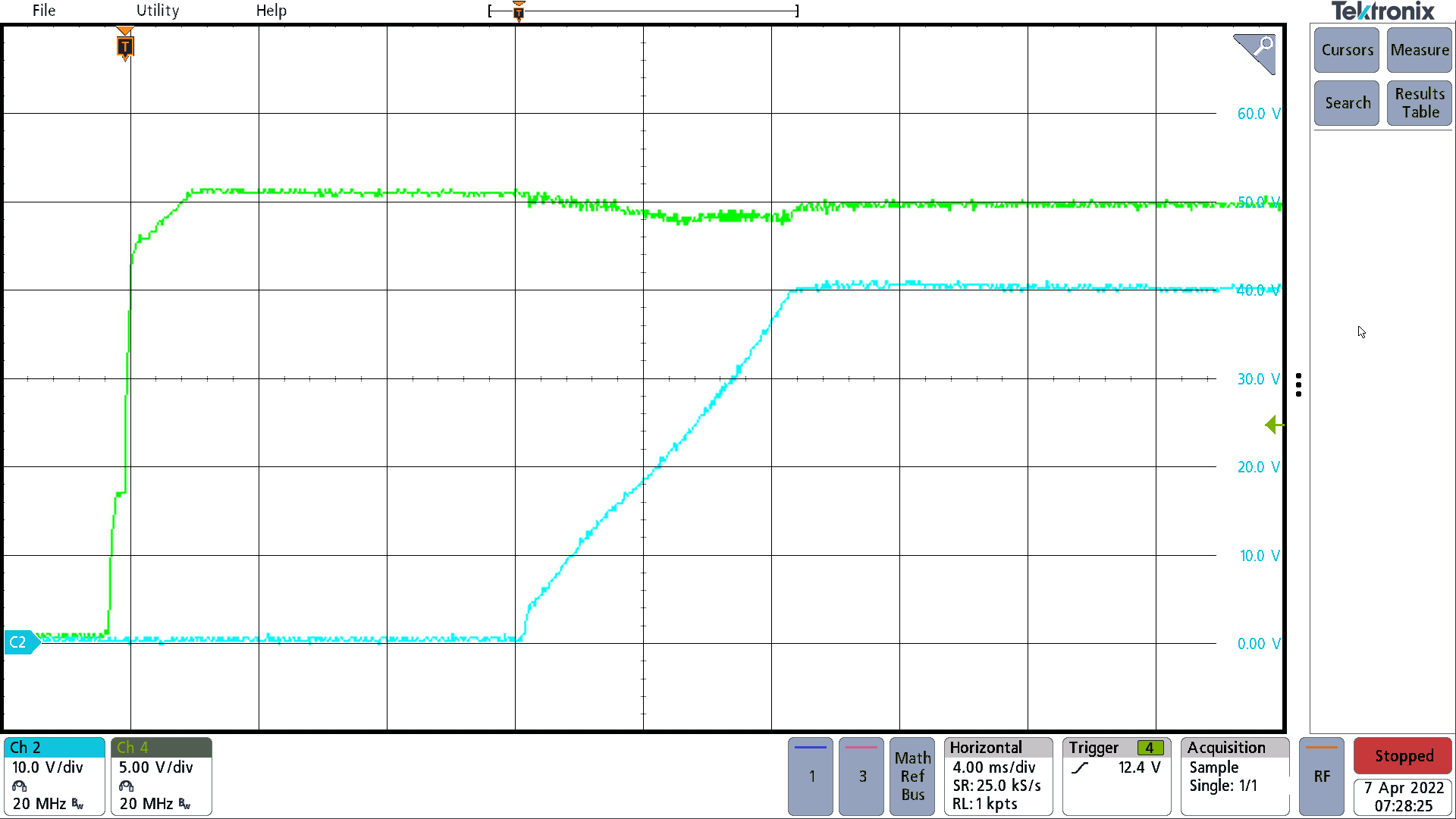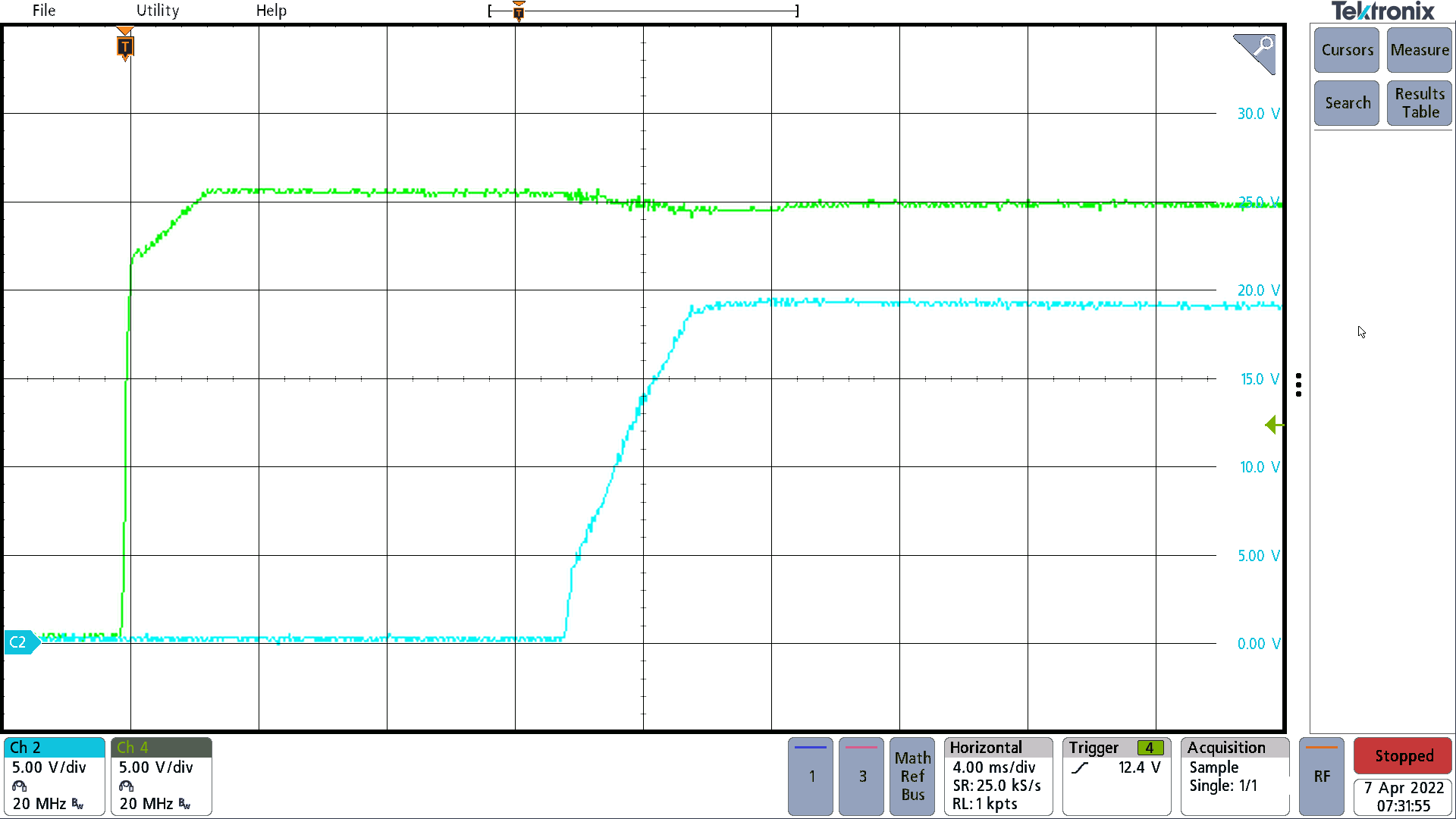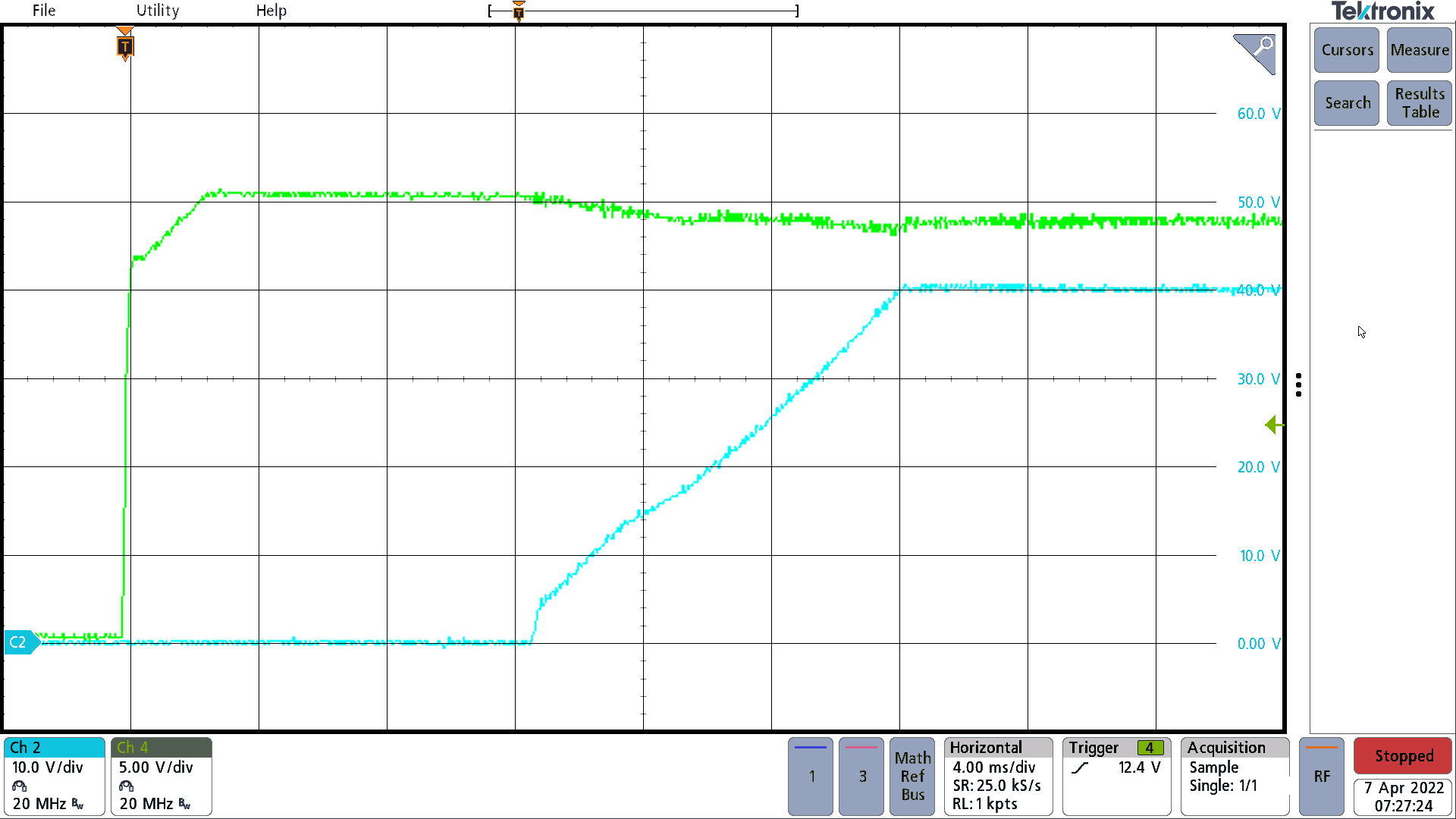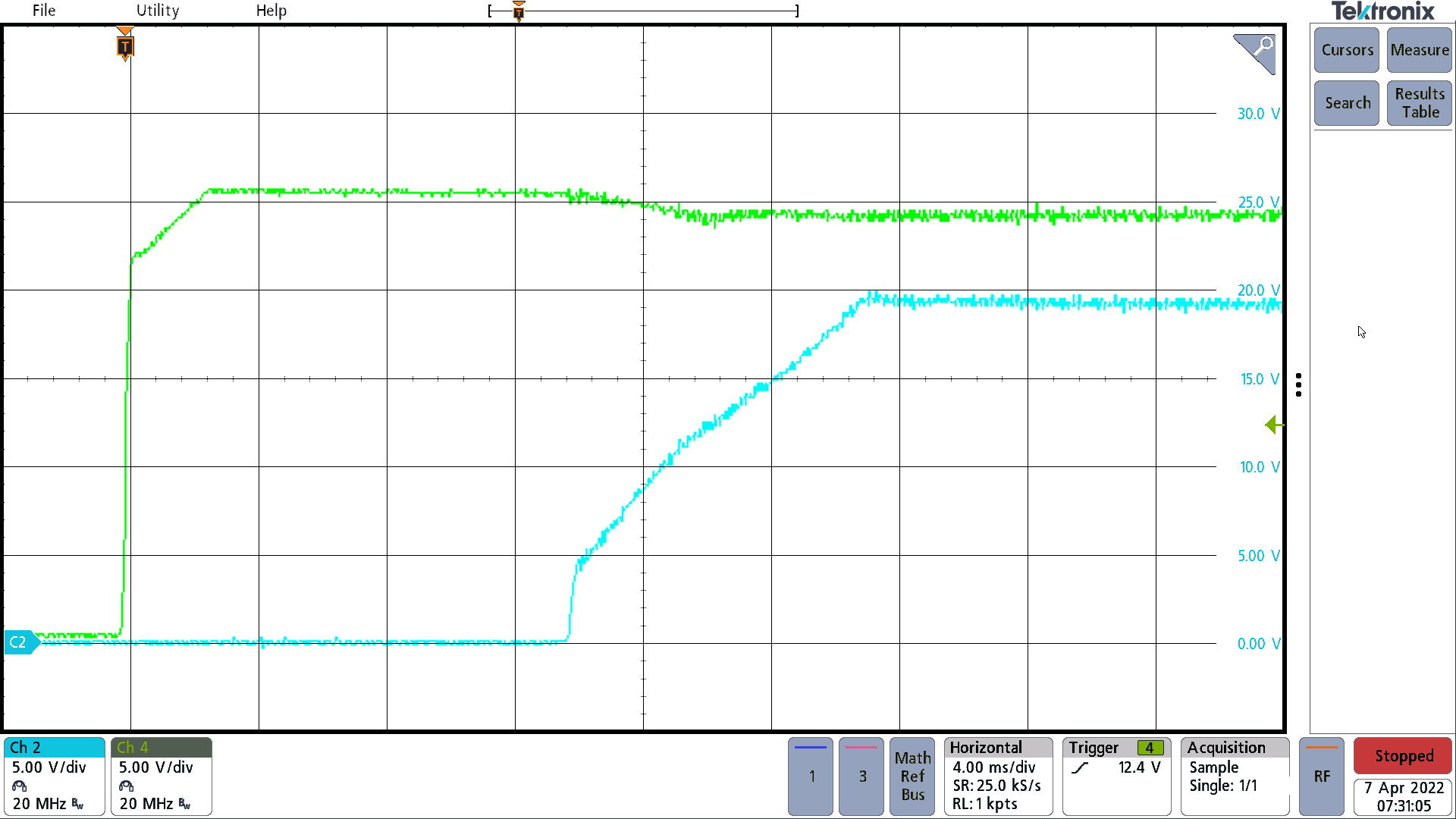TIDT287 August 2022
3.4 Start-Up Sequence
Start-up behavior is shown in the following figures.
 Figure 3-23 Start-up, 40-V, 0-A Output, 24-V Input, 5
ms/div, CH2: Output Voltage, 10 V/div, CH4: Input Voltage, 5 V/div
Figure 3-23 Start-up, 40-V, 0-A Output, 24-V Input, 5
ms/div, CH2: Output Voltage, 10 V/div, CH4: Input Voltage, 5 V/div Figure 3-25 Start-up, 19-V, 0-A Output, 24-V Input, 5
ms/div, CH2: Output Voltage, 5 V/div, CH4: Input Voltage, 5 V/div
Figure 3-25 Start-up, 19-V, 0-A Output, 24-V Input, 5
ms/div, CH2: Output Voltage, 5 V/div, CH4: Input Voltage, 5 V/div Figure 3-24 Start-up, 40-V, 2.5-A Output, 24-V Input, 5
ms/div, CH2: Output Voltage, 10 V/div, CH4: Input Voltage, 5 V/div
Figure 3-24 Start-up, 40-V, 2.5-A Output, 24-V Input, 5
ms/div, CH2: Output Voltage, 10 V/div, CH4: Input Voltage, 5 V/div Figure 3-26 Start-up, 19-V, 4-A Output, 24-V Input, 5
ms/div, CH2: Output Voltage, 5 V/div, CH4: Input Voltage, 5 V/div
Figure 3-26 Start-up, 19-V, 4-A Output, 24-V Input, 5
ms/div, CH2: Output Voltage, 5 V/div, CH4: Input Voltage, 5 V/div